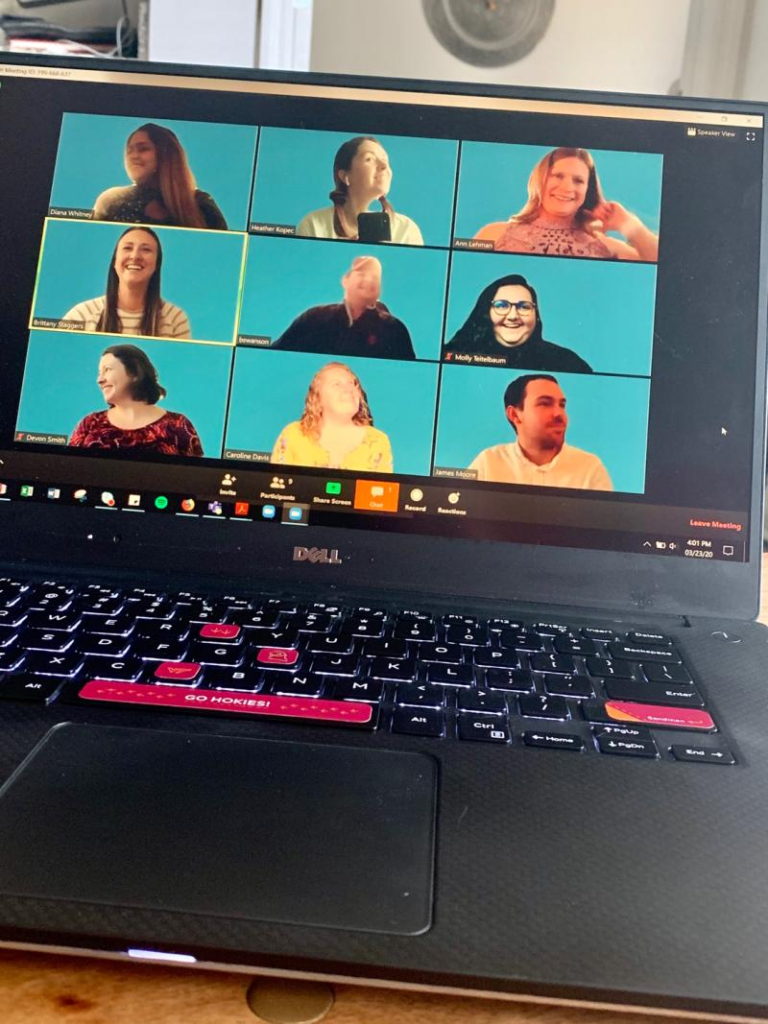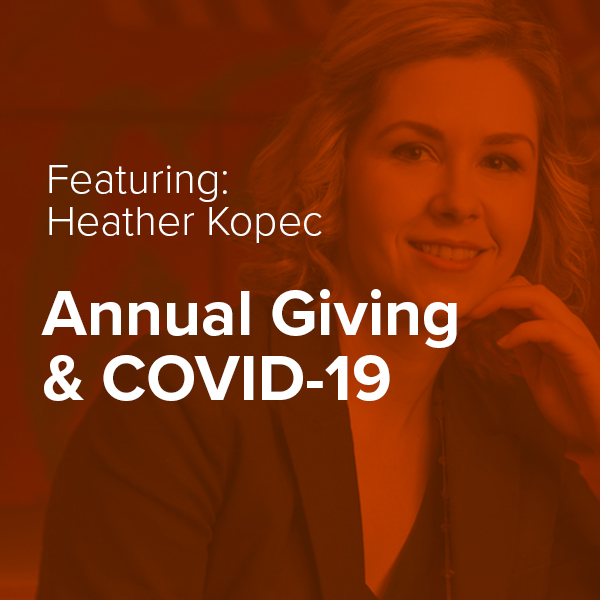It’s a tough time for the annual fund. Across the country, the spread of the coronavirus has forced colleges and independent schools to suspend giving days and hit pause on plans for upcoming solicitations.
We talked with Heather Kopec who leads the annual giving team at Virginia Tech about how her team is taking on new challenges. In our interview, Heather gave tips for keeping open communication going, how the team is taking on big projects that will pay off next year, the need to reach out to mid-level donors, and how they hope to resume fundraising.
"Everything is in the air and that's good in the sense that it allows us to really refocus on the things we can do right now to set us up for FY21."
Stand up, sit down
With everyone working remotely, Heather’s team starts and ends their day together on a team Zoom meeting. Everyone has “cameras up,” which means the whole team can see each other and share what’s going on and what they accomplished that day.
“Normally we do standup meetings every day in-person where we look at all of our projects and the deliverables and what’s on our hot list. But we didn’t want to lose that end of day continuity. So we called them sit down meetings and those are now our way to summarize what we did today and what we learned,” Heather said. If you follow Heather on LinkedIn, you’ll see that her team is having fun with remote work. They’ve done a Brady Bunch recording, dress in pink on Wednesdays as a nod to Mean Girls, and wear their Hokie gear on Spirit Fridays.

Focus on long-term projects
Like so many institutions, Heather’s team had to hit pause on their Giving Day — they held a Zoom meeting to do a little group grieving — and they’re also holding back on their original plans for the end of the school year. But that means they have more time to dedicate to projects that will pay off in FY21 once the current crisis is over.
“Everything is in the air and that’s good in the sense that it allows us to really refocus on the things we can do right now to set us up for FY21.
There are a couple of projects that have been on our list for a long time. First, how do we launch a more all encompassing, sustaining donor program rather than just offering recurring gifts as a payment method. The other big project designing a better anniversary milestone program for our donors. [We want to celebrate] when you’ve had three, 10 or 20 of consecutive giving.
Those two projects are what I’m having my team focus on right now… I don’t want to have my team focus on fundraising right now because I don’t know when we’re going to be ready to start fundraising.
That was a key lesson from last week: if we’re focusing on anything in FY20 right now, it’s only going to frustrate us more if we invest all this time in ideas and then we have to sidetrack it.”
Figure out 1-on-1 outreach to mid-tier donors
“Last week we really focused on… people giving above $10,000 who are assigned. Our team had everybody go through their portfolios and say, ‘Who are the people that I’m closest to? Who do I have active solicitations for?’ to make our donors feel good, connected, and give them the insider perspective.
Now we’re starting to tackle what we’re going to do in the middle of the pyramid for $500-9,999, donors. How can we do type of one-on-one outreach on a mass level? We don’t have that answer yet, but we’ve put together a cross-functional team to think about how to tackle that from a donor relations, prospect management, annual giving, and leadership giving perspective.”
When it’s time to make an appeal, use student stories
“We’re not going to rush to get back into the solicitation game just because. There’s a lot of people doing emergency funds right now, but we want to put a face to it and tell that story. We have an emergency fund — we’ve always had an emergency fund — and, yes, we’re using it so much faster than we ever have before. But we want to be really mindful and intentional of how we tell that story while also making the ask.
We’re looking at tools we already have… Are there aspects of technology that we have that we’re not fully utilizing? And through that, can we get some students stories? We have our student alumni ambassadors, which are the 100 most-spirited Hokies. Now they’re all over the country. So how do we tap into that group who is already close to us and is willing to share stories?
Because when we come back to annual giving fundraising, we have to put the human first. It’s all about people and faces and that’s going to be more important than it ever was before.”
Here’s EverTrue’s take on the novel coronavirus pandemic and its impact on advancement: We don’t have all the answers, but we’re going to learn from each other and share best practices for remote fundraising, working from home, and handling uncertainty. Bookmark this page and subscribe for ongoing updates.
